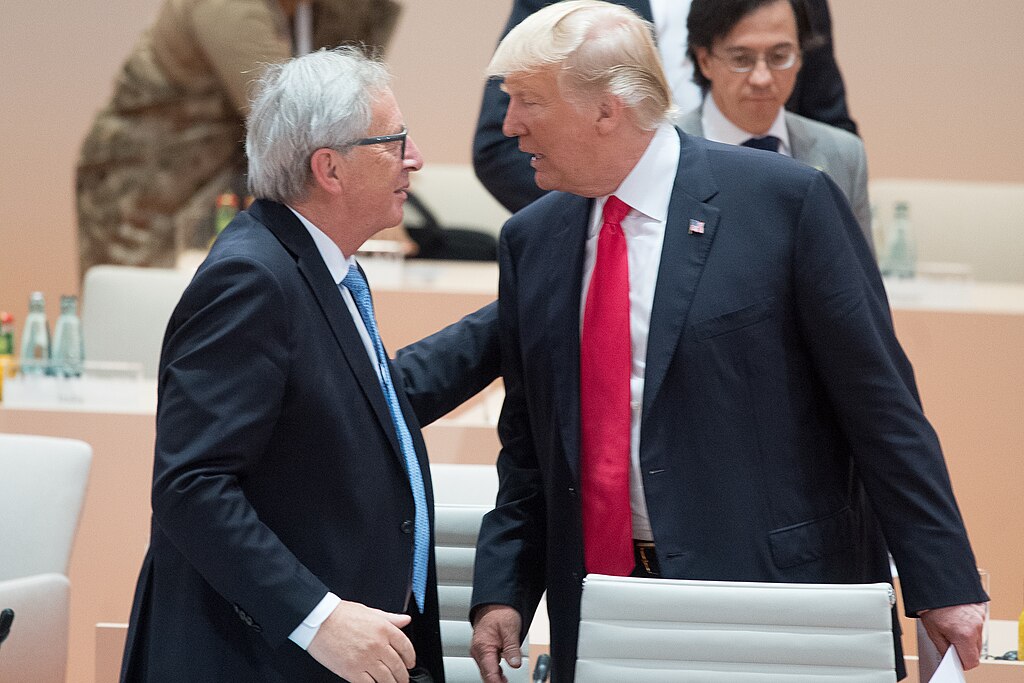Donald Trump’s 2025 presidency is already sparking controversy as his administration doubles down on a promise to eliminate sanctuary cities. Trump’s plan includes cutting federal funding, increasing immigration enforcement, and introducing new legislation to hold local governments accountable. The aggressive approach has ignited fierce reactions across the nation, raising questions about its impact on local communities and federal relations.
Cutting Federal Funding to Sanctuary Cities
Trump’s strategy centers on withholding federal funds from sanctuary cities—jurisdictions that limit cooperation with federal immigration enforcement agencies. The administration has labeled these cities as havens for undocumented immigrants and a threat to national security. By leveraging federal grants, Trump aims to pressure local governments to comply with Immigration and Customs Enforcement (ICE) directives.
Supporters of the move argue that sanctuary policies undermine the rule of law and enable criminal activity. “Sanctuary cities send the wrong message,” said policy analyst Andrew Miller. “Federal law must take precedence over local policies when it comes to national security.”
However, opponents claim that cutting funding could harm essential public services, including education and law enforcement, disproportionately affecting vulnerable populations. “Punishing entire communities for political disagreements is counterproductive,” said immigration advocate Maria Lopez. “It creates more problems than it solves.”
Enhanced Enforcement Measures and Legislative Push
In addition to financial penalties, Trump’s administration has proposed deploying more ICE agents to sanctuary cities to enforce immigration laws directly. The initiative includes prioritizing high-profile deportation cases to send a message to other jurisdictions.
Furthermore, Trump plans to reintroduce legislation that would penalize local officials who obstruct federal immigration efforts. Known as the “Sanctuary Cities Accountability Act,” the bill would impose fines and even criminal charges on officials found in violation.
Critics warn that such measures could erode trust between immigrant communities and local authorities, leading to underreporting of crimes and increased community tensions. “These policies create fear, not safety,” said Sarah Kent, a civil rights attorney. “Public safety depends on cooperation, not coercion.”
Netizens React to Trump’s Sanctuary City Plan
Trump’s crackdown on sanctuary cities has sparked intense online debate. Supporters have rallied behind the initiative, while opponents have condemned it as overly harsh. User @SecureAmericaFirst tweeted, “Sanctuary cities are a threat to our country’s safety. Trump is taking the bold steps we need!” In contrast, @ImmigrantRightsNow argued, “Cutting funding to cities only hurts residents. These policies are a disaster waiting to happen.”
Others pointed out the broader implications of Trump’s plan. “Federal overreach into local governance sets a dangerous precedent,” wrote @PolicyCritic. Meanwhile, @BorderPatriot countered, “Trump is finally holding cities accountable for breaking the law. It’s about time!”
The proposal’s potential impact on crime reporting also drew attention. “Fear of deportation will stop immigrants from cooperating with police. This will make communities less safe,” posted @JusticeForAll. Conversely, @LawAndOrderAdvocate praised the move, writing, “Sanctuary policies are a loophole for criminals. Trump’s plan is long overdue.”
Challenges and the Road Ahead
Trump’s sanctuary city crackdown faces significant legal and political hurdles. Lawsuits from affected cities and opposition from Congress are likely to delay implementation. Additionally, balancing federal and local authority will remain a contentious issue as the debate continues.
As Trump’s administration pushes forward with its plans, the nation remains divided on whether these policies will strengthen security or deepen existing divides.



 Trump Announces $1,776 Cash Bonus for U.S. Military Personnel Ahead of Christmas
Trump Announces $1,776 Cash Bonus for U.S. Military Personnel Ahead of Christmas  U.S. Senators Move Toward Deal to Strengthen Military Helicopter Safety Rules
U.S. Senators Move Toward Deal to Strengthen Military Helicopter Safety Rules  Trump Administration Proposes Sweeping Limits on Gender-Affirming Care for Children
Trump Administration Proposes Sweeping Limits on Gender-Affirming Care for Children  Trump Administration Reviews Nvidia H200 Chip Sales to China, Marking Major Shift in U.S. AI Export Policy
Trump Administration Reviews Nvidia H200 Chip Sales to China, Marking Major Shift in U.S. AI Export Policy  U.S.-Russia Talks in Miami Raise Hopes for Potential Ukraine War Deal
U.S.-Russia Talks in Miami Raise Hopes for Potential Ukraine War Deal  Jared Isaacman Confirmed as NASA Administrator, Becomes 15th Leader of U.S. Space Agency
Jared Isaacman Confirmed as NASA Administrator, Becomes 15th Leader of U.S. Space Agency  Canada Signals Delay in US Tariff Deal as Talks Shift to USMCA Review
Canada Signals Delay in US Tariff Deal as Talks Shift to USMCA Review  U.S. Initiates $11.1 Billion Arms Sale to Taiwan Amid Rising China Tensions
U.S. Initiates $11.1 Billion Arms Sale to Taiwan Amid Rising China Tensions  EU Delays Mercosur Free Trade Agreement Signing Amid Ukraine War Funding Talks
EU Delays Mercosur Free Trade Agreement Signing Amid Ukraine War Funding Talks  Trump Signals Progress in Ukraine Peace Talks Ahead of U.S.–Russia Meeting
Trump Signals Progress in Ukraine Peace Talks Ahead of U.S.–Russia Meeting  Republicans Raise National Security Concerns Over Intel’s Testing of China-Linked Chipmaking Tools
Republicans Raise National Security Concerns Over Intel’s Testing of China-Linked Chipmaking Tools  U.S. and China Push for Ceasefire as Thailand–Cambodia Border Clashes Escalate
U.S. and China Push for Ceasefire as Thailand–Cambodia Border Clashes Escalate  Federal Appeals Court Allows Trump’s National Guard Deployment in Washington, D.C. to Continue
Federal Appeals Court Allows Trump’s National Guard Deployment in Washington, D.C. to Continue  Barham Salih Elected as Next UN High Commissioner for Refugees
Barham Salih Elected as Next UN High Commissioner for Refugees  Trump Administration Plans Major Increase in Denaturalization Cases for Naturalized U.S. Citizens
Trump Administration Plans Major Increase in Denaturalization Cases for Naturalized U.S. Citizens  Dan Bongino to Step Down as FBI Deputy Director After Brief, Controversial Tenure
Dan Bongino to Step Down as FBI Deputy Director After Brief, Controversial Tenure  Argentina Unions Rally Against Milei’s Labor Reform as Congress Debates Key Bill
Argentina Unions Rally Against Milei’s Labor Reform as Congress Debates Key Bill 































